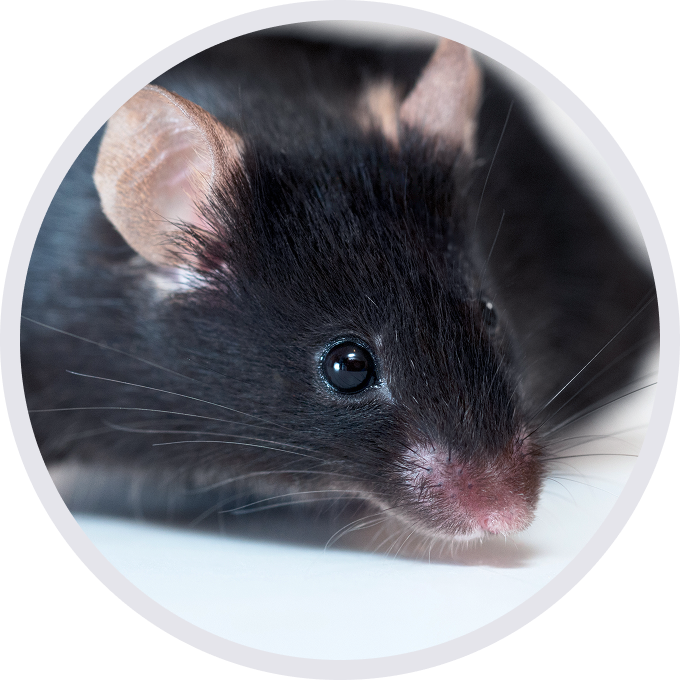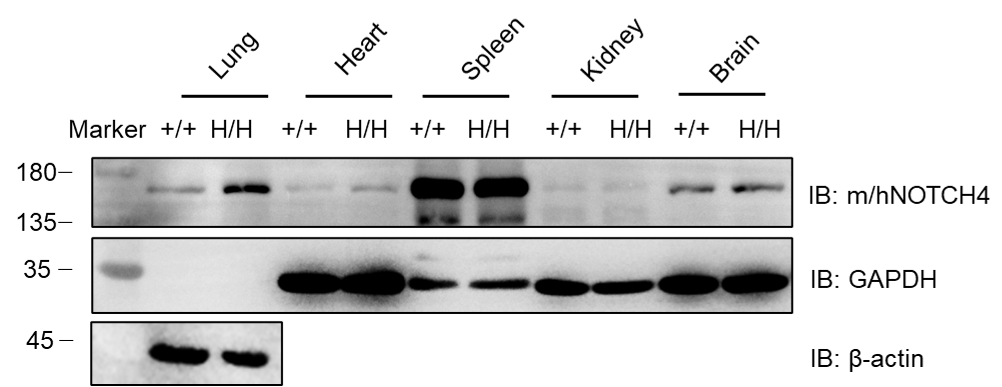
C57BL/6-Notch4tm1(NOTCH4)Bcgen/Bcgen • 112877
Gene targeting strategy for B-hNOTCH4 mice. The exons 1-24 of mouse Notch4 gene that encode signal peptide, extracellular domain and transmembrane domain were replaced by human counterparts in B-hNOTCH4 mice. The genomic region of mouse Notch4 gene that cytoplasmic portion was retained. The promoter, 5’UTR and 3’UTR region of the mouse gene were also retained. The chimeric NOTCH4 expression was driven by endogenous mouse Notch4 promoter, while mouse Notch4 gene transcription and translation will be disrupted.

Strain specific analysis of NOTCH4 mRNA expression in wild-type C57BL/6JNifdc mice and B-hNOTCH4 mice by RT-PCR. Spleen RNA were isolated from wild type C57BL/6JNifdc mice (+/+) and homozygous B-hNOTCH4 mice (H/H), then cDNA libraries were synthesized by reverse transcription, followed by PCR with mouse or human NOTCH4 primers. Mouse Notch4 mRNA was detectable in wild-type mice. Human NOTCH4 mRNA was detectable only homozygous B-hNOTCH4 mice but not in wild-type mice.

Western blot analysis of NOTCH4 protein expression in homozygous B-hNOTCH4 mice. Various tissue lysates were collected from wild-type C57BL/6JNifdc (+/+) mice and homozygous B-hNOTCH4 mice (H/H), and then analyzed by western blot with anti-NOTCH4 antibody (Santa, sc-393893). 40 μg total proteins were loaded for western blotting analysis. NOTCH4 were detectable in lung, heart, spleen, kidney and brain in wild-type mice and homozygous B-hNOTCH4 mice. The antibody was cross-reactive between human and mouse.